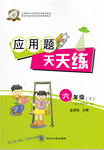题目内容
The story of how I got my job was a funny one.
One day, I was _______ along a street to an interview when a yellow car suddenly _______ in. _______another car coming in the other _______, I had to brake hard and _______ another cyclist. We both fell, but _______ neither of us was hurt. I became _______ and cycled as fast as possible to the driver of the yellow car to tell him how I considered him. I told him what a bad _______I thought he was and that he was a(n) _______ to other people on the road. His face turned ________. I warned him not to drive ________ in the future so that everyone else could enjoy a long life.
I was in time for the ________. Having walked into the room, to my ________, I found one of the three interviewers ________ to be the driver of the yellow car. We looked at each other for a while, ________silent. Then I decided to look ________ the whole matter as a great joke! I ________ and told him that I talked much the last time we met and that this time it was turn for him to talk a great deal. Lost in thought for a while, he ________ that I was not going to say anything about his bad driving. The interview went________. Two days later, I received a letter offering me the job. I was pleased that the manager - the driver of the yellow car, didn’t ________ my rudeness to him. Through the experience, I find something that seems impossible at first turns out to be good.
1.A. cycling B. walking C. running D. driving
2.A. stopped B. cut C. passed D. waited
3.A. As B. For C. With D. By
4.A. condition B. position C. location D. direction
5.A. knocked B. bumped C. beat D. rushed
6.A. happily B. unfortunately C. luckily D. disappointedly
7.A. sorry B. excited C. nervous D. angry
8.A. driver B. worker C. cyclist D. boss
9.A. pity B. idiot C. risk D. fool
10.A. black B. white C. pale D. red
11.A. carelessly B. carefully C. slowly D. patiently
12.A. job B. interview C. meeting D. appointment
13.A. excitement B. joy C. anger D. astonishment
14.A. happened B. wanted C. seemed D. planned
15.A. making B. keeping C. breaking D. stopping
16.A. up B. at C. on D. into
17.A. laughed B. excused C. nodded D. calmed
18.A. hoped B. found C. heard D. wished
19.A. fast B. terribly C. well D. slowly
20.A. realize B. want C. know D. mind
 应用题天天练四川大学出版社系列答案
应用题天天练四川大学出版社系列答案

